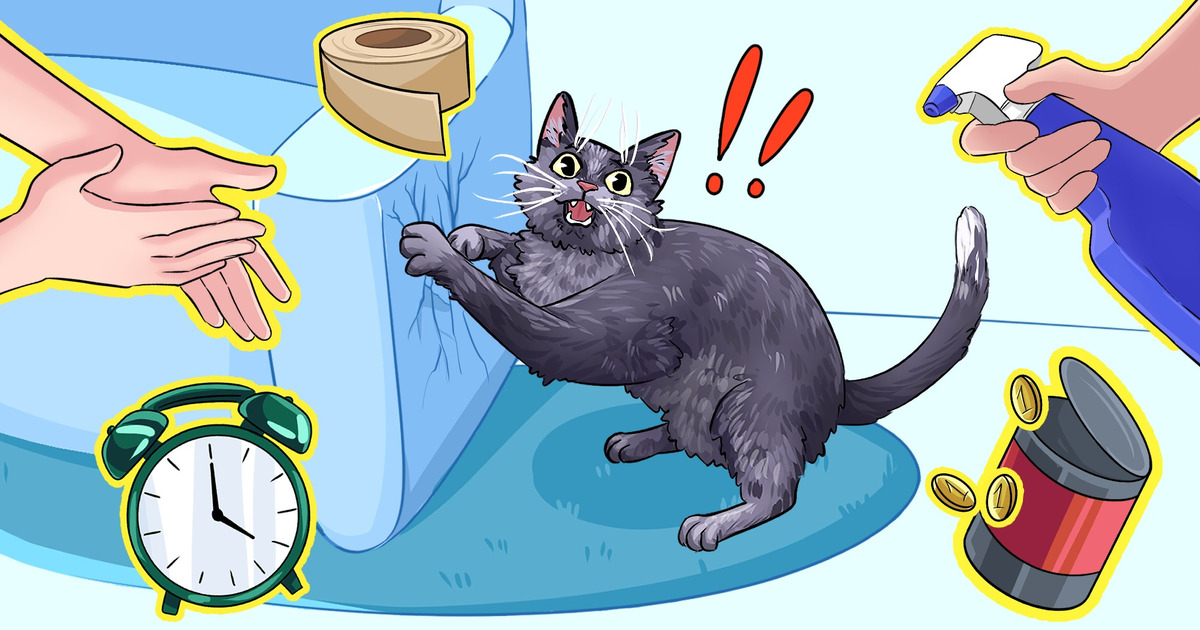
How to Discipline a Cat

Cats may exhibit aggressive responses because of their natural predation and instincts. Sometimes, our furry friends may excessively scratch, spray urine around, or meow too much due to some behavioral issues. Therefore, we need to look for solutions to this misbehavior.
5-Minute Crafts rounded up some tips to help you deal with your cat’s new and undesirable behaviors constructively and positively.
❗ Important: This article is for informational purposes only. Before taking any action regarding your cat’s misbehaving, it’s strongly recommended you consult with your vet first.
What positive and negative reinforcement are
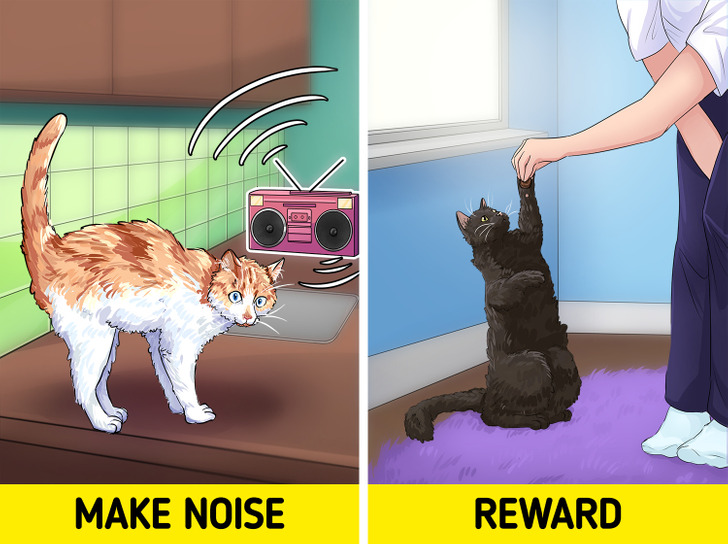
When you see your cat’s just picked up some bad behavior out of nowhere, like jumping on counters or not using the litterbox, it’s not always advisable to punish it immediately. Check with your vet first to determine whether it’s related to any medical condition, such as hormonal imbalances, mites, stress, etc. In correcting a cat’s behavior, reinforcement plays a significant role. There are 2 types:
- Positive reinforcement rewards your cat with something pleasant to strengthen its behavior, like giving food or praise, for example.
- Negative reinforcement is removing something unpleasant. For instance, when your cat jumps onto your kitchen counter, consider playing a loud noise and turning it off when it jumps down. This way, it’ll stay on the floor.
1. Encourage good behavior.

- Reward your cat for doing good. Once your furry pal does something right, like if it stopped chewing wires, give it a reward in the form of love, praise, or treats, such as tuna, shrimp, or catnip toys, within 3 seconds. Ensure to provide the treats only for the cat’s good behavior during the training. Also, allow it to exercise before a meal or bed.
- Play with it. Cats may act out if they’re bored or aren’t getting enough playtime, so they may choose to chase things around the house. As a solution, you can spare 30 minutes of playtime in 15-minute intervals. You can also consider providing your cat with a swing to play on in your absence.
2. Discourage bad behavior.
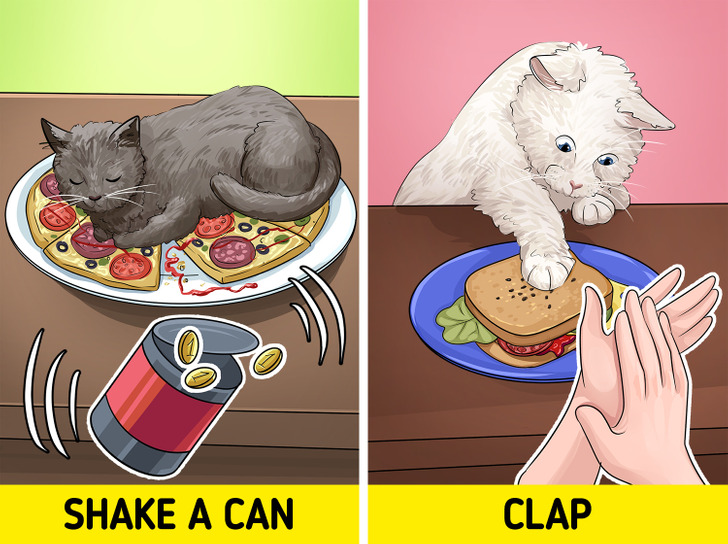
- Shake a noisy can to startle it. When your cat goes to any unallowed places in your house, such as the countertops or near your plants, shaking a can with some pennies may do the trick. You may need to repeat it 2-3 times. You can place the cans around those areas too. When the cat bangs them, the noise will stray it away.
- Clap your hands. Cats dislike noise, and clapping your hands suddenly, continuously, and loudly may unsettle your furry pal, so it’ll stop acting out. You can use a whistle too. For a good result, repeat that for some time. It’ll help your feline family member associate the sound of your claps with its misbehavior.
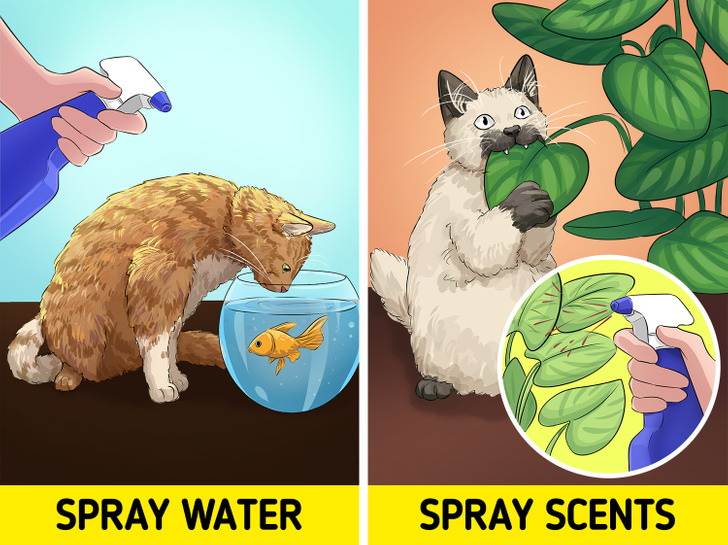
- Use a water spray bottle. If your furry pal acts out, giving them a little water spritz may prevent it from misbehaving. Ensure your cat doesn’t know that you are spraying it from behind.
- Use scents as deterrents. You can spray it onto the surfaces that you don’t want your cat to go to. To deter your cat from those areas, choose a safe commercial spray with unique ingredients, like citrus smells, eucalyptus, aloe, etc.
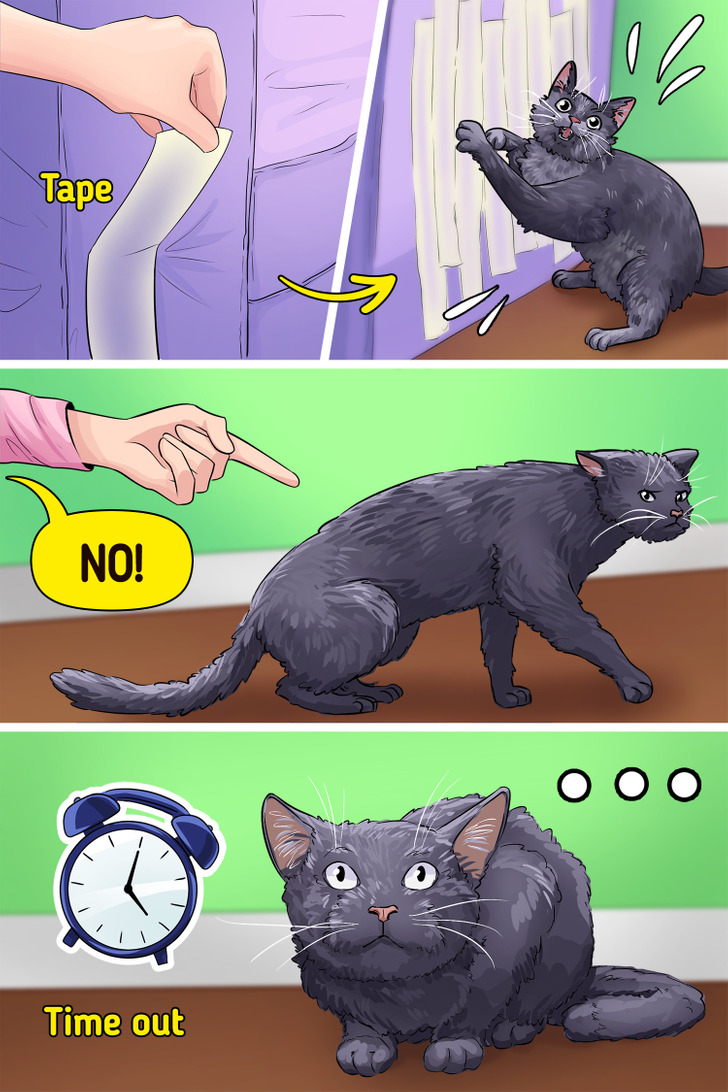
- Use double-sided tape or aluminum foil. If you don’t want your cat on certain surfaces, furniture, or in some areas, you can use tape with the sticky side out. The stickiness will repel your cat. You can place some scratching posts nearby those areas too.
- Use verbal queues. Yelling isn’t advisable, but firmly and loudly saying “no,” “stop,” or “hey” does the trick. The reason for this is that the cat will start relating that word with the bad behavior. Therefore, make sure you stay consistent in your actions.
- Give a time-out when the cat resorts to misbehaving. You can gently put it in another room alone for about 20 minutes or half an hour but with food, water, a litter box, etc. Often, this works as an effective disciplinary method.
3. Bonus: what not to do
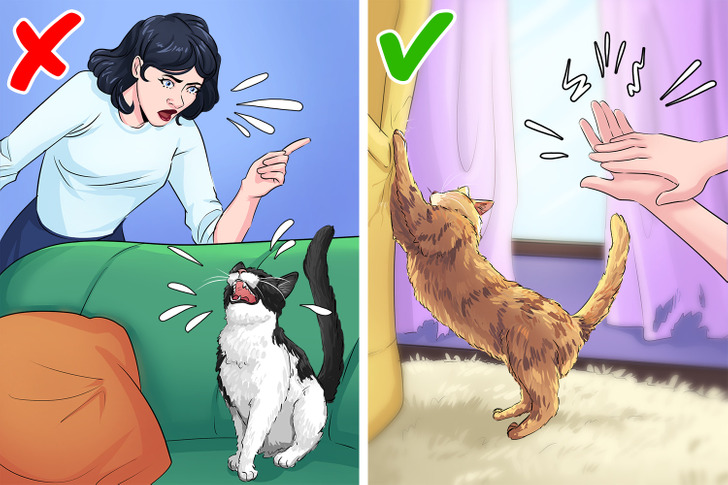
- Never hurt your cat because it may exacerbate the situation and cause fear and anxiety. Your furry pal may want to defend itself by biting, for example, which may result in a ’’hand-shyness’’ issue in your cat. Even more, the cat will no longer feel safe around you.
- Don’t yell or scream at your cat.
- Please don’t make it beg for food; reward your cat with food only for training. Otherwise, it’ll be begging for treats ceaselessly.